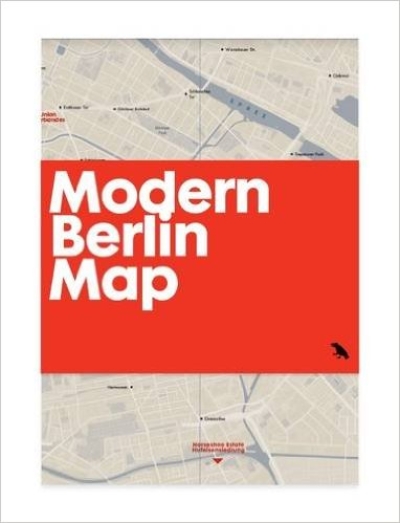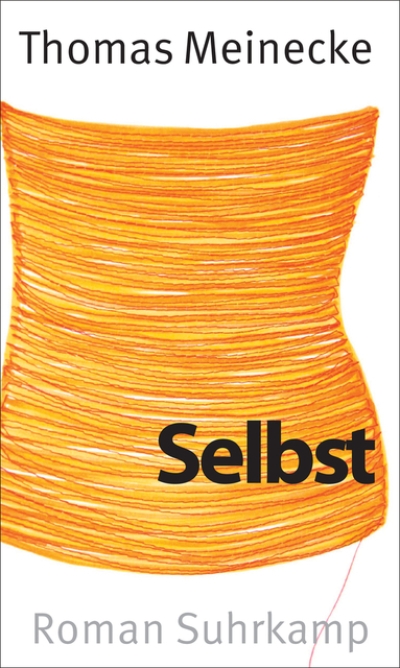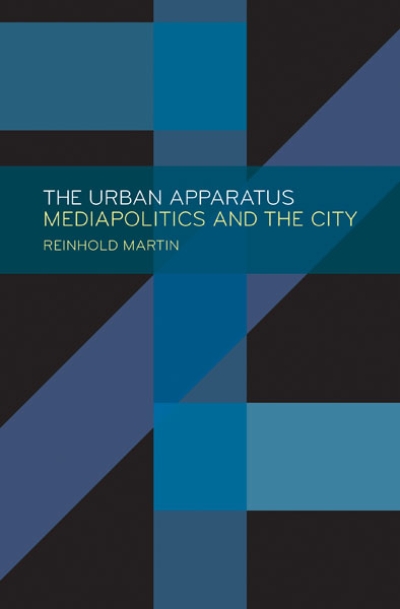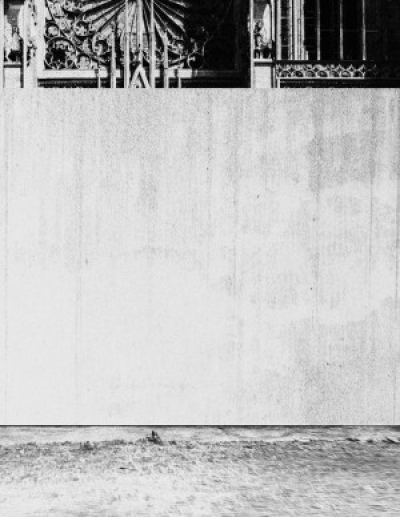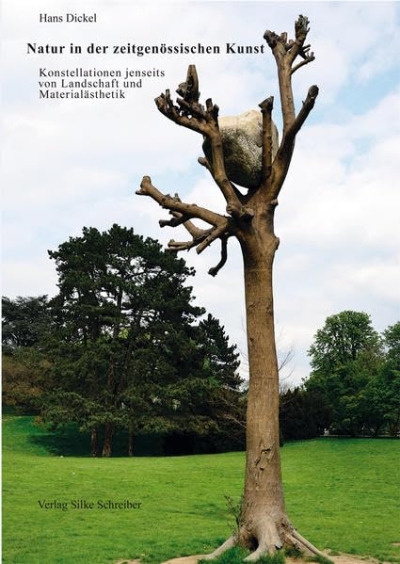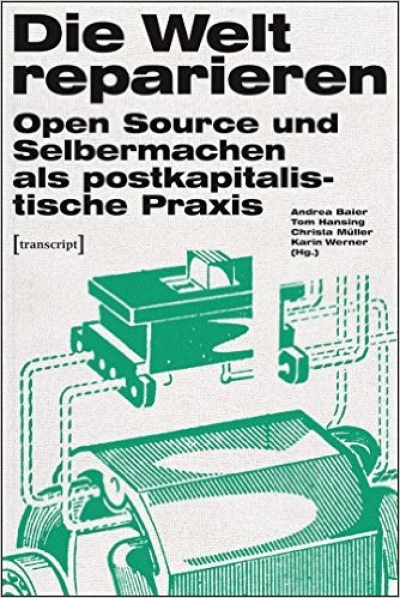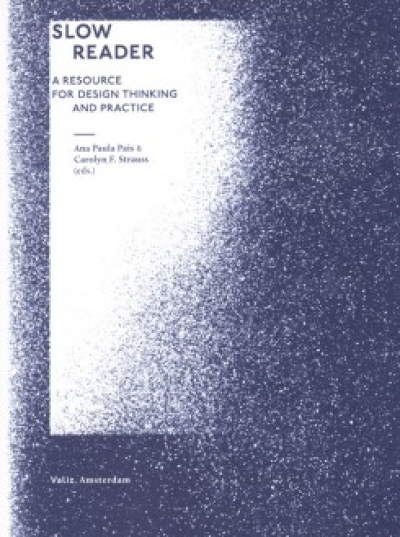gerade nicht auf Lager
Caroline Maniaque-Benton(Ed.)
Whole Earth Field Guide
Matthew Tempest, Simon Phipps, Derek…
Modern Berlin Map: Guide to 20th Century Architecture in…
gerade nicht auf Lager
Thomas Meinecke
Selbst
Reinhold Martin
The Urban Apparatus. Mediapolitics and the City
gerade nicht auf Lager
Pier Vittorio Aureli, Maria Sheherazade…
Rituals and Walls: The Architecture of Sacred Space
gerade nicht auf Lager
Olaf Bahner, Matthias Böttger (Hg.)
Neue Standards. Zehn Thesen zum Wohnen
Hans Dickel
Natur in der zeitgenössischen Kunst. Konstellationen…
gerade nicht auf Lager
Baier, Hansing, Müller, Werner (Hg.)
Die Welt reparieren: Open Source und Selbermachen als…
gerade nicht auf Lager
A. P. Pais, C.F. Strauss (eds)
Slow Reader: A Resource for Design Thinking and Practice
gerade nicht auf Lager
Nina Paim
Taking a Line for a Walk: Assignments in design education
gerade nicht auf Lager
Helmut Draxler
Abdrift des Wollens. Eine Theorie der Vermittlung
gerade nicht auf Lager
Christian Schittich (Ed.)
Wohnkonzepte in Japan / Housing in Japan: Typologien für…
gerade nicht auf Lager
Joost Grootens
Elemental Living. Contemporary Houses in Nature
gerade nicht auf Lager
Joerg Bader (Hg.)
Serge Fruehauf. Extra Normal
gerade nicht auf Lager
Contemporary City Institute ETH Studio…
Territory: On the Development of Landscape and City
gerade nicht auf Lager
Barbara Vinken
Die Blumen der Mode. Klassische und neue Texte zur…
gerade nicht auf Lager
Donna J. Haraway
Staying With the Trouble: Making Kin in the Chthulucene
gerade nicht auf Lager
Anna-Sophie Springer, Etienne Turpin (…
Fantasies of the Library
gerade nicht auf Lager
Henry Plummer
The Experience of Architecture
gerade nicht auf Lager
Aberrant Architecture
Wherever You Find People: The Radical Schools of Oscar…
Urs Peter Flückiger
Wie viel Haus? Thoreau, Le Corbusier und die Sustainable…
gerade nicht auf Lager
Caroline A. Jones, David Mather,…
Experience: Culture, Cognition, and the Common Sense
Friedrich von Borries
Weltentwerfen. Eine politische Designtheorie
gerade nicht auf Lager
Douglas Crimp
Before Pictures
gerade nicht auf Lager
Nina Rappaport
Vertical Urban Factory
gerade nicht auf Lager
Boris Groys
Particular Cases
gerade nicht auf Lager
Ana de Brea
Total Latin American Architecture. Libretto of Modern…
Jaleh Mansoor
Marshall Plan Modernism: Italian Postwar Abstraction and…
gerade nicht auf Lager
Mckenzie Wark
Molecular Red. Theory for the Anthropocene
gerade nicht auf Lager
Mark Nash (Ed.)
Red Africa. Affective Communities and the Cold War
gerade nicht auf Lager
Adolf Loos
Ornament und Verbrechen
gerade nicht auf Lager
Thilo Hilpert
Century of Modernity. Das Jahrhundert der Moderne.…
Hannah Neate, Ruth Craggs
Modern Futures
gerade nicht auf Lager
Douglas Spencer
The Architecture of Neoliberalism: How Contemporary…
gerade nicht auf Lager
Freek Lomme (Ed.)
Can You Feel it? Effectuating Tactility and Print in the…
Guillaume Sibertin-Blanc
State and Politics: Deleuze and Guattari on Marx
Christoph Keller
Paranomia
gerade nicht auf Lager
Philipp Meuser
Seismic Modernism. Architecture and Housing in Soviet…
Cartha
On Relations in Architecture
gerade nicht auf Lager
Michaela Meise
Eshi Addis Ababa
gerade nicht auf Lager
Takahiro Kurashima
Poemotion 3
gerade nicht auf Lager
Han Byung-Chul
Die Austreibung des Anderen. Gesellschaft, Wahrnehmung und…
Cate St Hill
This is Temporary. How Transient Projects are Redefining…
gerade nicht auf Lager
Carlo Ratti, Matthew Claudel
The City of Tomorrow: Sensors, Networks, Hackers, and the…
Henri Lefebvre
Metaphilosophy
Eduard Helman
Rhetoric of Logos: A Primer for Visual Language
gerade nicht auf Lager
Marie Neurath, Robin Kinross
Die Transformierer. Entstehung und Prinzipien von Isotype
gerade nicht auf Lager
P. Lewis, M. Tsurumaki, D. J. Lewis
Manual of Section
gerade nicht auf Lager
W. Nägeli, N. Kirn Tajeri (Hg.)
Kleine Eingriffe: Neues Wohnen im Bestand der…
gerade nicht auf Lager
Peter Granser
El Alto. Freddy Mamani Silvestre
gerade nicht auf Lager
Omar Kholeif (Ed.)
Electronic Superhighway. From Experiments in Art and…
gerade nicht auf Lager
Bill Caplan
Buildings are for People. Human Ecological Design
gerade nicht auf Lager
Hannah Black
Dark Pool Party
R. Pasel, A. Hagner, H. Drexler, R. Boch
Home not Shelter! Gemeinsam leben statt getrennt wohnen
Alessandro Biamonti
Archiflop. A guide to the most spectacular failures in the…
Isabell Lorey, Gundula Ludwig, Ruth…
Foucaults Gegenwart. Sexualität - Sorge - Revolution
Brigitta Kuster
Choix d'un passé. Transnationale Vergegenwärtigungen…
Simon Roloff
Der Stellenlose: Robert Walsers Poetik des Sozialstaats
gerade nicht auf Lager
Jace Clayton (aka DJ Rupture)
Uproot. Travels in 21st-Century Music and Digital Culture
gerade nicht auf Lager
Nicolas Bourriaud
The Exform
gerade nicht auf Lager
Blanco, Galan, Carrasco, Llopis, Vezier…
After Belonging: Objects, Spaces, and Territories of the…
gerade nicht auf Lager
Sven Quadflieg, Gregor Theune (Eds.)
Nadogradnje. Urban Self-Regulation in Post-Yugoslav Cities
Regina Bittner, Elke Krasny (Hg)
Auf Reserve: Haushalten! Historische Modelle und aktuelle…
gerade nicht auf Lager
Karin Harrasser
Prothesen. Figuren einer lädierten Moderne
Frieze Magazine
frieze A to Z of Contemporary Art
gerade nicht auf Lager
Leonardo Finotti
A Collection of Latin American Modern Architecture
gerade nicht auf Lager
Werner Sewing
No more learning from Las Vegas. Stadt, Wohnen oder…
gerade nicht auf Lager
Yuk Hui
On the Existence of Digital Objects
gerade nicht auf Lager
Alina Serban & Kalliopi Dimou,…
Enchanting Views: Romanian Black Sea Tourism Planning and…
gerade nicht auf Lager
Andre Lepecki
Singularities. Dance in the Age of Performance
gerade nicht auf Lager
M. R. Stein, L. Miller, M. Henrichs (Hg)
Blueprint for Counter Education. Curriculum, Handbook, Eall…
gerade nicht auf Lager
Owen Hatherley
The Chaplin Machine. Slapstick, Fordism and the Communist…
Lina Dokuzović
Struggles for Living Learning. Within Emergent Knowledge…
gerade nicht auf Lager
Marcus Quent (Hg)
Absolute Gegenwart
gerade nicht auf Lager
Fabian Frenzel
Slumming It: The Tourist Valorisation of Urban Poverty
gerade nicht auf Lager
Keller Easterling
Extrastatecraft. The Power of Infrastructure Space
gerade nicht auf Lager
Yuk Hui, Andreas Broeckmann
30 Years after Les Immatériaux: Art, Science and Theory
gerade nicht auf Lager
Jacques Lucan
Composition, Non-Composition. Architecture and Theory in…
gerade nicht auf Lager
Seth Price
Fuck Seth Price (Second Edition, Hardcover)
gerade nicht auf Lager
J. Herzog, P. de Meuron
Herzog de Meuron. Trügerische Transparenz. Beobachtungen…
Florentine Sack
Open House 2. Gestaltungskriterien für eine neue…
Beti Zerovc
When Attitudes Become the Norm: The Contemporary Curator…
gerade nicht auf Lager
Luca Lo Pinto, Vanessa Joan Müller (Eds…
Frederick Kiesler. Function Follows Vision, Vision Follows…
gerade nicht auf Lager
Thun-Hohenstein, Bogner, Lind, Vischer…
Friedrich Kiesler – Lebenswelten / Life Visions
gerade nicht auf Lager
Ruben Pater
The Politics of Design: A (Not So) Global Manual for Visual…
gerade nicht auf Lager
Giovanna Silva
Syria, A Travel Guide to Disappearance
Amie Siegel
Double Negative. Ricochet 10
Jens Balzer
Pop. Ein Panorama der Gegenwart
gerade nicht auf Lager
Timothy D. Taylor
Music and Capitalism. A History of the Present
GRAFT
Architecture Activism
gerade nicht auf Lager
Nav Haq (Ed.)
RAVE. Rave and its Influence on Art and Culture
gerade nicht auf Lager
Trudy Nieuwenhuys, Gemeente Museum Den…
Constant. New Babylon. To Us, Liberty
gerade nicht auf Lager
Borja Ballbé
Ordinary Landscapes. Paisajes comunes
Riet Wijnen (Ed.)
abstraction creation, art non figuratif 1932
gerade nicht auf Lager
A. Lepik, V. S. Bader (Hg)
World of Malls. Architekturen des Konsums
C. Menrad, H. Creighton (Eds.)
William Krisel's Palm Springs
gerade nicht auf Lager
Brandon Labelle
Overheard and Interrupted
gerade nicht auf Lager
Jessica Helfand
Design. The Invention of Desire


